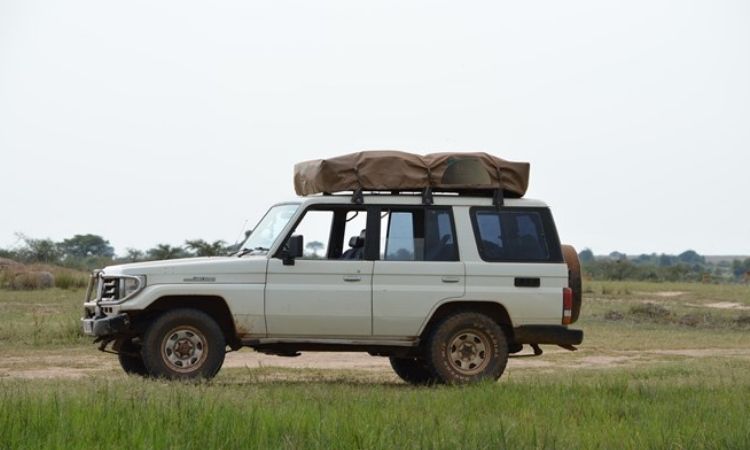Self-Drive Safari in Serengeti National Park, Tanzania?
Self-Drive Safari in Serengeti National Park, Tanzania? Self-Driving Safari in Serengeti National Park: Is It Justifiable? Is it feasible to achieve? Self-driving safaris in Serengeti National Park are viable and highly rewarding; nevertheless, they necessitate prior planning, specific expertise, and a substantial expense. Organizing a self-drive safari in the Serengeti is inherently enticing. It is a highly individualized experience that evaluates ayour driving skills. You also gain the opportunity to autonomously study the flora and fauna present in the Serengeti’s vast expanse.
The Serengeti is arguably the most gratifying safari park on the continent due to its plethora of stunning features, such as the big wildebeest migration, and its diverse safari options, including game drives, walking safaris, and hot air balloon safaris. This park is best appreciated with prior preparation. The primary pathways from Naabi Hill gate to Seronera, the epicenter of activity, and from Seronera extending east and west, are infamous among Tanzanian tour operators for their arduous driving conditions. The path is arduous, characterized by washboard-like undulations and rugged terrain. Drivers are encouraged to adhere to a minimum speed limit of 25 km/h to prevent loss of control and potential rollover of their vehicle.
The most accessible regions from Arusha are the southern Serengeti plains, encompassing Ndutu and Seronera. Despite its remoteness, investigating Lobo and the western corridor is valuable. To explore the lesser-visited regions of the Serengeti, it is advisable to hire a safari vehicle accompanied by a driver-guide.

The logistics of arranging an independent safari in the Serengeti.
Driving a car across the Serengeti is more intricate than it appears, particularly when juxtaposed with numerous other places where organizing a road trip merely entails renting a vehicle, choosing a route, and embarking on the journey. It is imperative to note the significant increase in prices. Permits for autonomous vehicles are far more costly than those for tour operators. Furthermore, allocate 300–400 miles of driving every day to optimize your experience in the Serengeti.
Accommodation in Serengeti for your self-guided safari expedition.
If you possess a vehicle, numerous accommodation alternatives are available to you. During your journey, you may choose to reserve a lodge for indulgence or spend the night at one of the complimentary campgrounds.
Unfortunately, overnight accommodations significantly increase the budget. Your principal expenses in the Serengeti will be fees and permits, regardless of whether you are lodging in a lodge (60 USD per night per person), a private camp (50 USD per night per person), or a public campsite (30 USD per night per person). The entire cost of a Serengeti lodge may already encompass that fee. Conversely, a budget lodge accommodation will cost $200 per individual per night.
Self-camping and seeing the Serengeti is the most cost-effective option. Nonetheless, it still necessary to hire camping gear and provide your own provisions. Numerous tour organizations and your automobile rental service offer camping equipment for a reasonable fee.

Additional activities within Serengeti National Park.
In Serengeti National Park, walking safaris provide an alternative experience for people wanting a different safari choice. The visitor center of Serengeti National Park facilitates reservations for safari walks. The cost per person for the safari ranges from 20 to 25 USD, contingent upon its duration. The resort may arrange game drives or balloon excursions by request in advance.
The Serengeti is a straightforward park to navigate during your self-drive safari in Tanzania. The roads are predominantly well-maintained, and signposts are ubiquitous across the area. Exploration is permitted to any extent within the park; however, we recommend that self-drivers remain around the park’s center for enhanced wildlife viewing chances. The utilization of an offline map facilitates rapid location identification.
What additional considerations should you keep in mind when embarking on a self-drive safari in the Serengeti?
Commencing your journey in Arusha City necessitates enough preparation for the forthcoming experiences. Strategize your itinerary to encompass the desired attractions, procure sufficient provisions for the entirety of your park visit, carry a minimum of 5 to 10 liters of water per individual daily, and endeavor to secure the requisite permits beforehand.
It is necessary to acquire an entrance quotation prior to proceeding to the Ngorongoro Conservation Area gate to remit payment for park admission. This can be accomplished at their office in Arusha. MasterCard and Visa are accepted payment methods at the entrance of Serengeti National Park.
The journey from Arusha to the Serengeti is lengthy and arduous. The projected travel durations on Google Maps are significantly erroneous, and the road conditions are suboptimal. During your journey, endeavor to decelerate and savor the environment. The duration required to get from Arusha to the Serengeti is as follows.

- The distance from Arusha to Karatu is 140 kilometers, which takes approximately 3 hours to traverse.
- The journey from Loduare gate to the Ngorongoro crater entrance takes roughly 45 minutes to traverse a distance of about 15 km.
- 85 kilometers in 2 to 3 hours from Ngorongoro Crater to Naabi Hill Gate (Serengeti entry).
- Commence at Naabi Hill gate and traverse 60 kilometers to Seronera, the middle region of Serengeti where the majority of camps are situated, in around one hour.
- The journey of 75 kilometers from Seronera to Lobo Ranger Post requires approximately two hours.
- Returning from Seronera to Arusha may necessitate six to eight hours.
- Fundamental Etiquette to Observe During Your Autonomous Safari in Serengeti National Park.
- Remain on the designated roadway, as off-road driving may incur fines of hundreds of dollars.
- Adhere to the established speed restriction within national parks, regardless of the apathy exhibited by the majority of guides.
- Note that speeding constitutes 90% of accidents in the Serengeti.
- Avoid pursuing the animals. It is deemed unsettling, and one may incur a penalty of up to $1,000 if apprehended by a park ranger.
- Position your vehicle to the side, deactivate the engine, and allow space for other vehicles to stop and observe the wildlife.
- It is advisable to refrain from abandoning your vehicle. This serves to safeguard you from the numerous predators inhabiting the Serengeti, including lions, cheetahs, and leopards.
- It is self-evident, yet it ought not to be. Do not dispose of waste near the roadway. The park’s biodiversity is affected even by the disposal of banana peels in the underbrush.
- Driving at night in the Serengeti is prohibited. Operate a vehicle solely between 6 a.m. and 6 p.m.
Self-driving safari in Serengeti National Park. Is it beneficial?
A self-guided safari in the Serengeti is not primarily focused on cost reduction. A self-drive trip may be up to 100% more expensive than a booked private tour. Additionally, protracted and arduous journeys.
Pre-determine the segment of the journey to be navigated with your travel companion.
This represents an additional benefit of utilizing a tour operator during your travels. Participating on a tour can markedly enhance your likelihood of encountering the elusive cheetah, leopard, or lion; nevertheless, it is important to note that guides maintain constant communication with each other.
Moreover, numerous events can transpire unexpectedly. In the event of an automotive issue, an unpleasant animal interaction, or a flat tire, it is advisable to seek the guidance of a seasoned expert.
However, nothing surpasses the exhilaration of independently operating a car. You have greater control over your direction and can maintain the experience’s privacy to your preference. If you spontaneously choose to prolong your stay in the Serengeti or subsequently explore another region of the nation, self-driving is the optimal choice. Driving throughout Central Africa necessitates thorough planning.

These experiences can be quite gratifying, contingent upon your own desires. Consequently, if this is your first safari and you lack experience driving in challenging conditions, self-driving in the Serengeti may result in incurring additional expenses for a taxing and unsatisfactory experience. If you have previously visited the Serengeti and seek a distinct adventure, this tour may be suitable for you.
Conclusion: Upon concluding your Serengeti exploration, you may augment your self-drive safari itinerary to encompass visits to the Ngorongoro Conservation Area, Lake Manyara National Park (noted for its tree-climbing lions), Tarangire National Park (renowned as the abode of giants), Arusha National Park (which houses Tanzania’s second-largest mountain), and Kilimanjaro National Park. These sites near Serengeti National Park are highly recommended for enhancing your safari experience.

